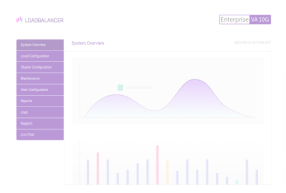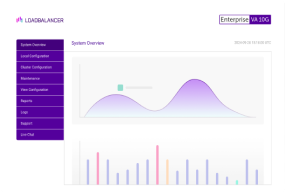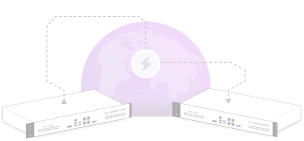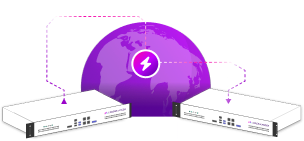Load balancing Planmeca Romexis
Benefits of load balancing dental PACS (DPACS)
Load balancing a dental PACS (Picture Archiving and Communication System) application is crucial for several reasons, primarily to ensure high availability, optimal performance, and the scalability of imaging data to ensure uninterrupted, high-quality patient care at volume.
- High Availability (HA): Load balancing constantly monitors the health of the servers running Planmeca Romexis. If one server fails or is taken down for maintenance, the load balancer automatically reroutes all traffic (imaging requests, data retrieval) to the remaining healthy servers. This ensures that clinical operations and access to critical patient images are uninterrupted, minimizing downtime and maintaining continuous patient care workflows.
- Improved performance: The primary function of load balancing is to intelligently distribute the incoming workload (accessing or processing large image files like CBCT data) across multiple servers. This prevents any single server from becoming overloaded or becoming a performance bottleneck, leading to faster response times for users (clinicians) and more efficient image processing and delivery.
- Scalability: Load balancing allows the dental facility or organization to easily scale its IT infrastructure to handle growing data volumes and an increasing number of users. As the demand on Planmeca Romexis grows, new servers can be seamlessly added to the load-balancing pool without disrupting service, ensuring the system can accommodate future growth without compromising performance.
About Planmeca Romexis dental software
Planmeca Romexis is a comprehensive and versatile dental software platform developed by Planmeca, a leading manufacturer of dental equipment.
It serves as an all-in-one solution that integrates various dental technologies and workflows into a single, user-friendly interface.
Why load balance dental PACS applications with Loadbalancer.org?
Loadbalancer.org started our journey into the healthcare space over a decade ago by partnering with Carestream to provide high availability to their PACS system (HCIS). Since then we decided to focus on working with Enterprise imaging vendors by providing smart yet intuitive High Availability solutions to their mission critical applications. We realized that the most effective way to work with healthcare vendors was to create strategic-level partnerships to supply unbreakable, intuitive, and cost-effective load balancing solutions.
As such, we are the vendor of choice for load balancing Dental PACS applications. That’s because our specialized expertise and solutions are precisely designed for the unique demands of healthcare and medical imaging environments.
- Native DICOM support and Health Checks: We are one of the few vendors to offer native support and specific DICOM ECHO health checks built directly into our appliance. This is crucial for PACS, as DICOM is the standard protocol. A simple port check isn’t enough; the DICOM ECHO check actively verifies that the PACS application is running and responding correctly, ensuring that traffic is only sent to truly healthy servers.
- Zero downtime: In a clinical setting, access to patient images is mission-critical. Our products are engineered for maximum stability and resilience, ensuring near-100% uptime for PACS/VNA systems. This reliability allows for seamless maintenance and upgrades of the backend PACS servers without disrupting the workflow of clinicians.
- Optimal Performance with Layer 4 Direct Routing (DR) mode: Medical and dental images (like CBCT scans) involve large file sizes. Loadbalancer.org frequently recommends and supports Layer 4 Direct Routing (DR) mode for PACS deployments. This mode offers the highest performance because inbound requests go to the load balancer, but the large data replies go directly from the server to the client, bypassing the load balancer and avoiding bottlenecks.
More on our healthcare expertise.
Why Loadbalancer.org for Planmeca Romexis?
This deployment guide isn’t theoretical; it has been field tested and rigorously validated by Planmeca experts. This means you can be completely confident that the solution described is robust, reliable, and backed by the real-world operational experience of a global leader in healthcare technology.
Loadbalancer’s intuitive Enterprise Application Delivery Controller (ADC) is also designed to save time and money with a clever, not complex, WebUI.
Easily configure, deploy, manage, and maintain our Enterprise load balancer, reducing complexity and the risk of human error. For a difference you can see in just minutes.
And with WAF and GSLB included straight out-of-the-box, there’s no hidden costs, so the prices you see on our website are fully transparent.
More on what’s possible with Loadbalancer.org.
How to load balance Planmeca Romexis
The load balancer can be deployed in four fundamental ways: Layer 4 DR mode, Layer 4 NAT mode, Layer 4 SNAT mode, and Layer 7 Reverse Proxy (Layer 7 SNAT mode).
For Planmeca Romexis, Layer 4 DR mode is recommended.
Virtual service (VIP) requirements
To provide load balancing and HA for Planmeca Romexis, the following VIP is required:
| VIP | Mode | Port(s) | Persistence mode |
|---|---|---|---|
| RomexisVIP | L4 DR | 104,1099,2099,50000-60000 | Source IP |
Load balancing deployment concept
Once the load balancer is deployed, clients connect to the Virtual Service (VIP) rather than connecting directly to a Planmeca Romexis server. These connections are then sent to the primary server if it’s up and passing health checks, and to the secondary server if not.

One-arm topology
One-arm direct routing (DR) mode is a very high performance solution that requires little change to your existing infrastructure. It provides full source IP address transparency and incredibly good performance.
When using a load balancer in one-arm DR mode all load balanced services can be configured on the same subnet as the real servers. The real servers must be configured to respond to the virtual server IP address as well as their own IP address. For more on one-arm topology see Topologies & Load Balancing Methods.
About Layer 4 DR mode load balancing
Layer 4 DR (Direct Routing) mode is a very high performance solution that requires little change to your existing infrastructure. The image below shows an example Layer 4 DR mode network diagram:
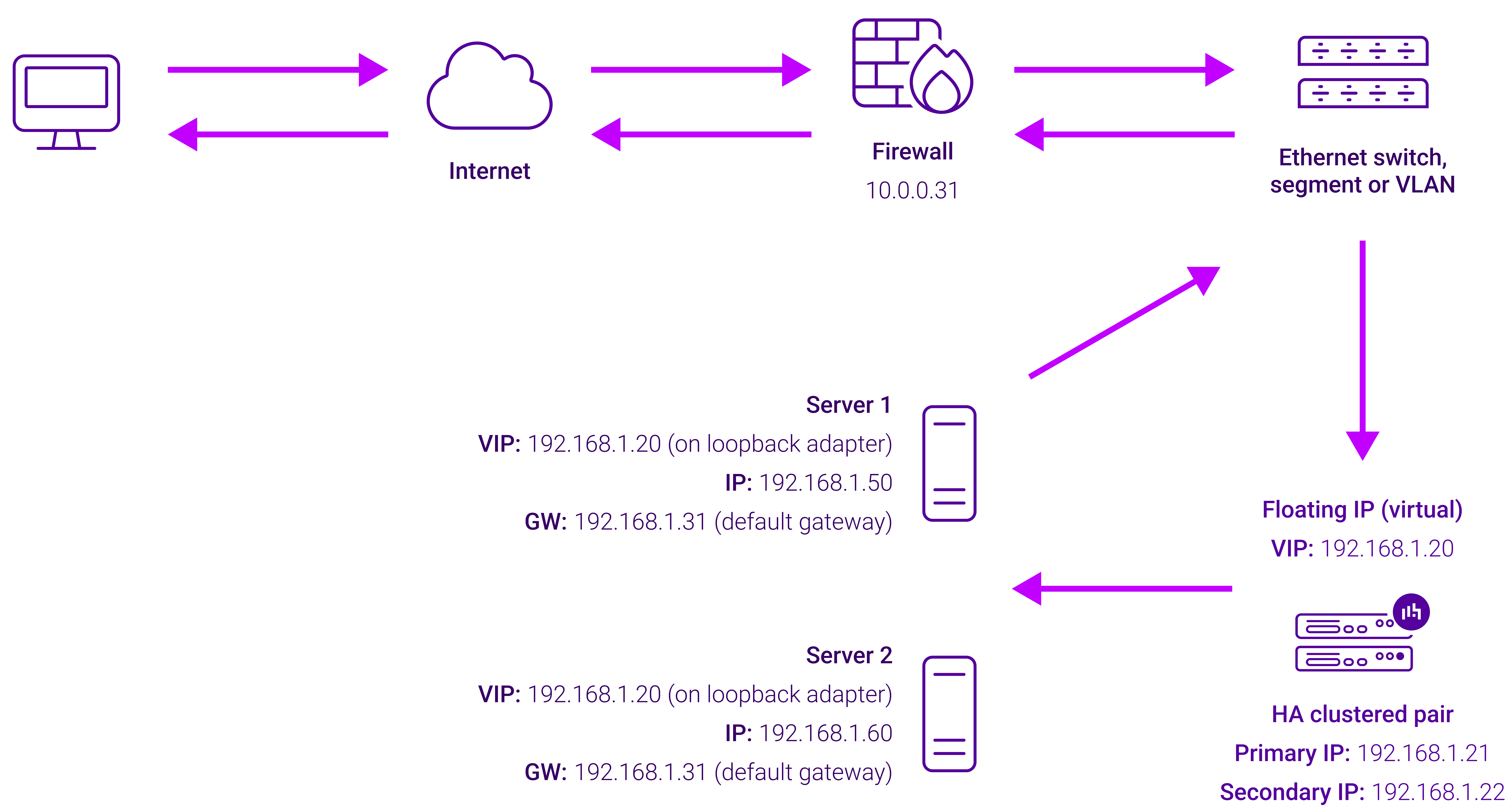
DR mode works by changing the destination MAC address of the incoming packet to match the selected Real Server on the fly which is very fast.
When the packet reaches the Real Server it expects the Real Server to own the Virtual Services IP address (VIP). This means that each Real Server (and the load balanced application) must respond to both the Real Server’s own IP address and the VIP.
The Real Server should not respond to ARP requests for the VIP. Only the load balancer should do this. Configuring the Real Server in this way is referred to as “Solving the ARP Problem”. For more information please refer to DR Mode Considerations.
On average, DR mode is 8 times quicker than NAT mode for HTTP and much faster for other applications such as Remote Desktop Services, streaming media and FTP.
The load balancer must have an interface in the same subnet as the Real Servers to ensure layer 2 connectivity which is required for DR mode to operate.
The VIP can be brought up on the same subnet as the Real Servers or on a different subnet provided that the load balancer has an interface in that subnet.
Port translation is not possible with DR mode, e.g. VIP:80 → RIP:8080 is not supported.
DR mode is transparent, i.e. the Real Server will see the source IP address of the client.
Note
Due to software constraints there cannot be multiple active Romexis servers running simultaneously. Therefore, the Virtual Service (VIP) on the load balancer is configured with one Romexis server as a Real Server (RIP) and the other as a fallback server. In this way, the second server is ready to take over should anything happen to the primary server, thus providing a highly available solution.









